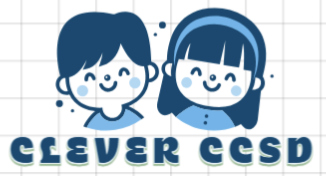Artificial Intelligence (AI) has emerged as one of the most powerful tools transforming the modern world, and education is no exception. From personalized learning systems to intelligent tutoring programs, AI in education is reshaping how students learn, teachers teach, and institutions operate. The traditional classroom, once limited by human pace and resources, is now evolving into a dynamic digital environment where learning is more adaptive, inclusive, and engaging than ever before.
The Rise of AI in Education
Over the past decade, the integration of AI in classrooms has accelerated dramatically. Schools, universities, and online learning platforms are adopting AI-driven technologies to enhance learning outcomes and streamline administrative processes. Virtual assistants, predictive analytics, and adaptive learning systems are no longer futuristic concepts—they are practical tools used daily by educators and learners worldwide.
For instance, AI-powered platforms like Coursera and Khan Academy use machine learning algorithms to recommend courses based on a learner’s progress and preferences. Similarly, tools like Grammarly and Duolingo use AI to offer personalized feedback, helping students improve their writing and language skills in real-time. These technologies make learning more efficient and tailored to individual needs, ensuring that no student is left behind.
Personalized Learning Experiences
One of the most significant contributions of AI in education is personalization. Every student learns differently—some grasp visual content faster, while others prefer text or hands-on practice. AI systems analyze data from each learner’s interactions, quizzes, and assignments to identify their strengths and weaknesses. Based on this information, the system can deliver customized learning materials, recommend specific exercises, and even adjust the difficulty level automatically.
This individualized approach not only boosts academic performance but also improves motivation. When students feel that lessons are designed for their pace and style, they engage more deeply. Teachers also benefit, as AI tools reduce their workload by handling repetitive tasks such as grading quizzes or tracking student progress. This allows educators to focus more on mentoring, creativity, and problem-solving—the human aspects of teaching that AI cannot replace.
AI-Powered Tools for Teachers
Teachers today have access to a range of AI-powered tools that simplify classroom management and enhance teaching effectiveness. Automated grading systems, for example, can evaluate multiple-choice tests and short answers instantly, saving hours of manual checking. Intelligent analytics tools provide insights into student engagement, identifying who might be struggling and who is excelling.
Moreover, AI-driven chatbots can act as virtual teaching assistants, answering routine student questions about assignments or deadlines. These chatbots operate 24/7, making support available beyond classroom hours. In this way, AI extends the boundaries of traditional education and fosters continuous learning.
Accessibility and Inclusion
AI in education also plays a crucial role in making learning more accessible and inclusive. Students with disabilities often face challenges that traditional systems cannot address. However, AI technologies like speech recognition, text-to-speech, and real-time translation tools help bridge these gaps. For instance, visually impaired students can use AI-driven screen readers, while those with hearing impairments benefit from automatic captioning during lectures.
Language barriers are also becoming less of an obstacle. AI translation tools allow international students to participate fully in courses taught in other languages. This inclusivity empowers students from diverse backgrounds to access quality education, regardless of their physical or linguistic limitations.
AI Beyond the Classroom
The influence of AI extends far beyond the classroom walls. It is also reshaping how educational institutions manage operations. AI systems can forecast student enrollment trends, optimize scheduling, and even detect academic dishonesty using pattern recognition. Universities are also leveraging AI for research, using intelligent systems to analyze large datasets, identify correlations, and predict outcomes—activities that once took researchers months or years to complete manually.
Interestingly, the connection between AI in education and other technology fields, such as web development, is becoming increasingly relevant. Many educational platforms depend on AI-powered websites and applications that offer seamless, interactive learning experiences. Web developers integrate AI tools into learning management systems, enabling features like real-time performance tracking, automated feedback, and adaptive content delivery. This collaboration between AI and web development ensures that digital education remains user-friendly, efficient, and continuously evolving.
Challenges of AI in Education
Despite its numerous advantages, the implementation of AI in education comes with challenges. Data privacy and security are major concerns, as AI systems rely heavily on personal data to function effectively. Schools must ensure that sensitive student information is protected and used ethically.
Another challenge is the digital divide—not all students have equal access to technology or high-speed internet. Without addressing this gap, AI-powered education could unintentionally widen educational inequality. Additionally, educators must receive proper training to integrate AI tools effectively. Without understanding how these technologies work, teachers may struggle to utilize their full potential.
The Future of Learning
The future of education is undoubtedly tied to AI. As these technologies continue to evolve, we can expect even more advanced systems capable of understanding emotions, predicting learning outcomes, and personalizing content on a deeper level. Virtual reality (VR) and augmented reality (AR), combined with AI, will create immersive learning environments where students can explore history, science, or art as if they were physically present in those worlds.
However, it is essential to remember that AI is not here to replace teachers—it is here to assist them. The emotional intelligence, empathy, and moral guidance provided by human educators cannot be replicated by machines. When used wisely, AI becomes a partner in the educational journey, helping teachers and students achieve their full potential.
Conclusion
AI in education is more than just a technological trend—it is a revolution that is redefining how we learn, teach, and grow. By embracing AI responsibly, schools and institutions can create smarter, more inclusive, and more efficient learning environments. As technology continues to advance, the partnership between human creativity and artificial intelligence will lead to an education system that empowers every learner to succeed.
In the end, AI in education is not about replacing the classroom—it’s about reimagining it.


